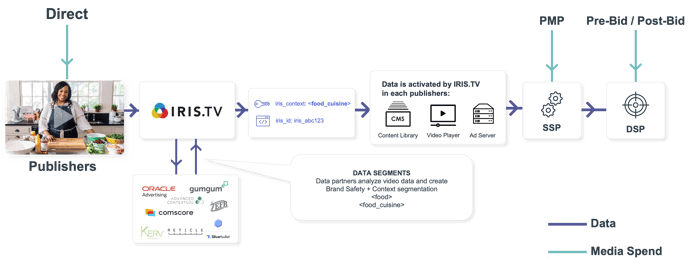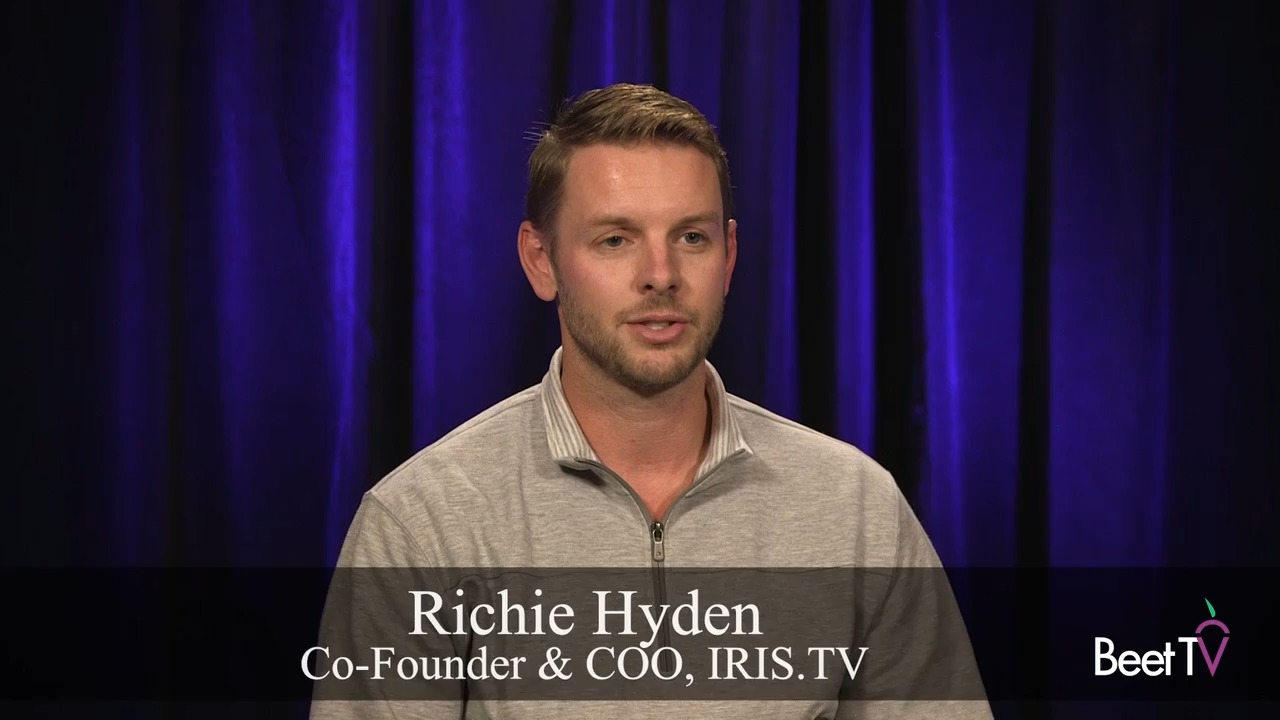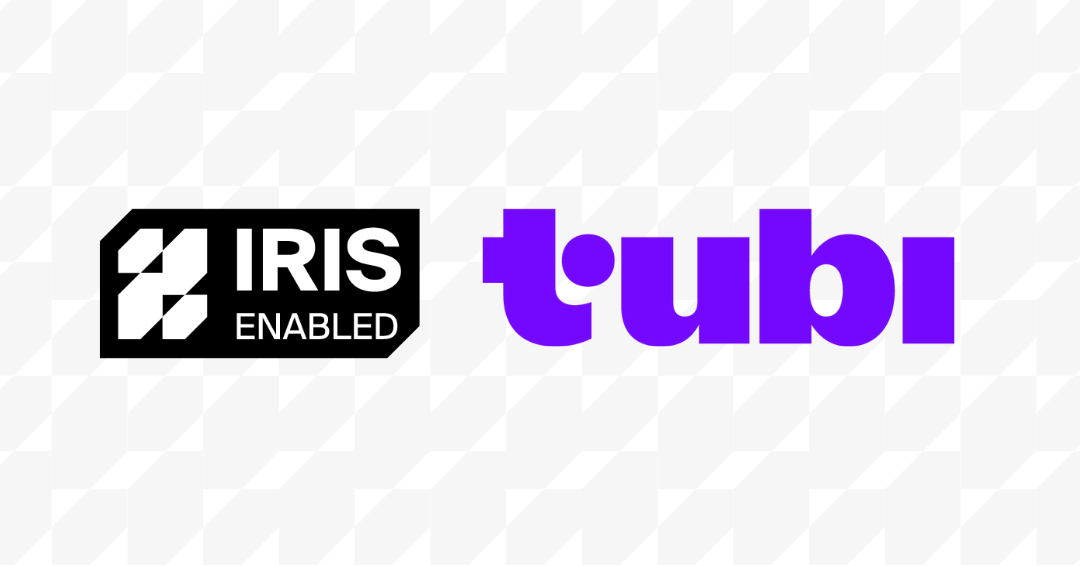Context Is Rebooted For CTV: the IRIS-enabled Ecosystem Explained
Posted by Rohan Castelino | Dec 07, 2021 | Contextual Video,Video,Announcements |
Co-founder and COO Richie Hyden sits down with Zach Rodgers at Beet Retreat to explain how the IRIS-enabled ecosystem is helping media buyers shift TV dollars to CTV through innovations in contextual targeting. See the original interview at Beet.TV.
What does IRIS.TV do?
IRIS.TV is a video data platform and we specialize in connecting video-level content data. We connect that data to third-party contextual and brand safety partners that are there to analyze a piece of video content. We build identifiers to then make that content addressable within the programmatic ecosystem.
We really think about ourselves as building the underlying API infrastructure for video-level data to enable buyers and sellers to transact on the topic of content that an advertisement may run adjacent to.
How do you work with media companies and advertisers?
We work with a lot of different constituents in the market. You can think about it visually as a left-to-right diagram.

Publishers - Video Ingestion and Normalization
On the left-hand side, we work with publishers. It's all about how we ingest the raw metadata from their video libraries. And we do that by integrating with their content management systems and ingesting all that rich data into our system such as titles, descriptions, keywords, the URLs of those videos, and closed caption files.
The data from all of those different publishers is also in different structures and nomenclatures. We then have to go through a normalization process that organizes and standardizes the data so that it can be addressable across the ecosystem.
Data Partners - Enrichment
After we ingest and normalize, the third element is how we enrich that data. What our platform does is connect the normalized data to industry-standard contextual and brand safety partners that analyze the content in their own unique ways, very similar to what's done by analyzing text on a webpage for contextual display advertising. We connect video content data with third-party contextual and brand safety partners allowing them to analyze and then return their definitions - third-party verified segments to the publisher so that they can enrich their bid stream data with contextual and brand safety information.
When we think about our work with the publishers, it's about how we enrich those creative assets that they have in the market, so that really they can drive up the CPMs, diversify that inventory to a buyer, offer different addressability elements, and really increase the revenue model.
Ad Platforms - Activation
The next constituent is the plumbing partners, and those are our ad platform partnerships. And that includes our SSAI and our ad serving partners. And those are partners that are activating the IRIS ID, which is an identifier that we assign to every video that comes into our platform. For our SSPs and DSPs partners that are selling and buying platforms, it's really about how do they decode the IRIS ID and use it for targeting, measurement, reporting, or planning.
The IRIS ID - A Global Identifier for Content
The IRIS ID is an identifier for the piece of content that's tied to the individual video. We're working with the SSPs and DSPs on how do they leverage the IRIS ID to package inventory based on the topic of content that a consumer is watching, something that's been historically very difficult to do in the Connected TV world.
On the DSP side, it's about how they use that IRIS ID to do pre-bid targeting. They positively target towards types of content that a consumer is viewing or stay away from things that are not suitable for the brand message.
Marketers and Media Buyers
Then on the far right-hand side of the diagram, we have the buyers. The buyers are more of an indirect customer for us. It's really more about evangelism and having them understand that they do have the ability to run their brand message adjacent to types of content that resonate. And it's really an education process on where that's accessible and what type of media plan is this best suited for.
For upper-funnel, maybe we're going for broad awareness such as an auto manufacturer looking for anyone watching auto-related content or travel or food & beverage. It can be very broad targeting versus targeting at the bottom-funnel for conversion. It's important to know what is working and how do I measure and determine when I put my auto brand message in front of a consumer watching that Land Rover video. So, we sort of think of ourselves as a neutral platform, open to the whole ecosystem and sometimes a lot of mouths to feed across the ecosystem.
How is this approach superior from the status quo AKA traditional text-based contextual targeting?
Contextual has been around for a really long time. It was sort of the beginning of digital advertising which was all based on search queries and really understanding what is the consumer looking for, what are they reading and what are they desiring at that moment in time.
What we saw when the display space started to grow is that in between selling and buying platforms in a bid request, the page URL is always transferred, it's a standard part of the open RTB spec. And when that happens, all page URLs are generally open domain. And that basically means that if anyone has that URL, they can access that page, which of course is the whole purpose of a journalist trying to get their article out there.
So when that URL travels from the sell-side to the buy-side into, for a DSP like The Trade Desk, it's very simple for them to pick up that URL, look at that webpage, or send it to a third party, who is going to look at that webpage, crawls the text and does some semblance of semantic analysis and determines is that safe or is that suitable? And it's all based on the text on the page.
The video URLs are not passed in the bid stream and that's been a huge technological limitation for that type of technology, which has relied on access to data that has been open to anyone in the ecosystem because the ecosystem supported the concept of page URLs.
A piece of video that an ad opportunity is going to run adjacent to never goes to the DSP, and it's never able to be analyzed and crawled. And there are two reasons for that. One is that publishers obviously don't want to send out their prized content so everyone can steal and pirate their inventory. And the second reason is that even if they did pass the URL, all of the content lives under lock and key with the systems under digital rights management, which makes it inaccessible.
In order to provide transparency in a CTV world, you had to build a very different set of infrastructure, which is connected the content management systems, where all of this data lives. We ran through that workflow, make it addressable so that a data partner can unlock what is very rich data, sight, sound, motion, there's a lot of insight inside a piece of video versus an article, and then connect that with that said DSP, perhaps The Trade Desk.




.png)

.png)



